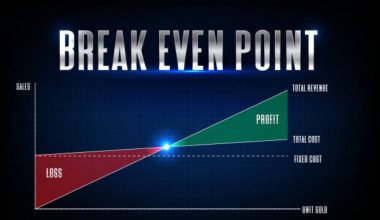The loan-to-value (LTV) ratio is frequently used in mortgage lending to establish the amount of down payment necessary. Also, whether a lender will extend credit to a borrower. Lenders prefer lower LTVs, but this comes at a cost—borrowers must make larger down payments. Proper calculation of the loan-to-value ratio is also essential.
What Is Loan-to-Value (LTV) Ratio?
Financial institutions and other lenders evaluate the loan’s risk by looking at the loan-to-value (LTV) ratio before approving a mortgage. Loans with a high LTV ratio may require the borrower to purchase mortgage insurance. Private mortgage insurance, or PMI, is called private mortgage insurance.
Financial institutions and lenders use Loan to value ratios to assess the lending ratio before the mortgage. Also referred to as loan-to-value ratios. For instance, if you put $20,000 down and buy a house valued at $200,000, the bank will loan you $180,000. Lenders use the loan-to-value ratio to determine how much credit they will extend to you.
How to Calculate the Loan-to-Value Ratio
With the aid of this straightforward formula, potential homebuyers can quickly ascertain a property’s LTV ratio. Calculating loan-to-value (LTV) is clear, dividing the loan amount by the value of assets or collateral pledged as security. The mortgage balance is divided by the property’s value when a mortgage is concerned.
LTV = (Assets Value / Loan Amount) x 100
In calculating the LTV ratio, the total amount borrowed is subtracted from the property’s appraised value and expressed as a percentage. If you put down $10,000 and purchase a house for its appraised value of $100,000, you will borrow $90,000. As a result, the LTV ratio is 90% (90,000/100,000).
Example 2: If a property appraises at $200,000 and the buyer requests a mortgage of $150,000, the Loan to value is 75%.
How to Understand Loan-to-Value Ratio?
Calculating the LTV ratio is an essential step in the mortgage underwriting process. In purchasing a home, refinancing an existing mortgage into a new loan, or taking out a loan against the equity in a piece of real estate, an LTV ratio can apply.
When evaluating a mortgage application, lenders look at the LTV ratio to determine how much risk they are willing to assume. Lenders believe there is a higher likelihood of the loan defaulting when borrowers request loans for sums that are at or close to the appraised value (and therefore have a higher LTV ratio). Because of the low down payment, the property requires more equity.
The amount of the down payment, the sales price, and the appraised worth of a property are the main variables that affect LTV ratios. Higher down payments and lower sales prices result in the LTV ratio is as low as possible.
Generally speaking, the likelihood of approving a loan and a lower interest rate increases with the LTV ratio. There will also be a decrease in the possibility of paying for private mortgage insurance (PMI) as a borrower.
The LTV ratio is just one of the criteria that determines a borrower’s eligibility. However, it can have a significant impact on the interest rate that a borrower can get. When an applicant’s LTV ratio is at or below 80%, most lenders will give the lowest interest rate they can
Although the interest rate on loans could go up as the LTV ratio rises, borrowers with a higher LTV ratio are still eligible for their mortgage approval. For instance, a 95% LTV ratio might grant the borrower mortgage approval. They may, however, request an interest rate that is a whole percentage point higher than the rate charged to a borrower with a 75% LTV ratio.
If the LTV ratio exceeds 80%, a lender might require the borrower to purchase private mortgage insurance. As a result, the total loan amount will increase by 0.5% to 1% per year. Until the LTV ratio is 80% or less, PMI payments are necessary. The LTV ratio will drop as you pay your loan balance, and your home’s value rises over time.
Although the law does not require it, almost all lenders require an 80% LTV ratio for borrowers to avoid the cost of PMI. Some lenders may occasionally disregard borrowers with a high income, little debt, or a sizable investment portfolio.
The main drawback of an LTV’s information is that it only accounts for a homeowner’s primary mortgage. It also excludes other debts they may have, like a second mortgage or a home equity loan, from its calculations. The CLTV is a more accurate indicator of a borrower’s ability to repay a mortgage.
What Factors Affect the LTV Ratio and its Calculation?
The three elements that impact the loan-to-value ratio are the sales price, the down payment, and the appraised value. A change in any of these amounts can affect the loan-to-value. And, consequently, the risk level for the financial institution and the interest rate they charge for the mortgage.
Down Payment
A borrower’s down payment is the sum of money that they put toward a purchase. By contributing to the down payment and receiving a mortgage loan from the lender, the borrower, and the lender jointly buy the property. These sums add up to the total contract price for the property. The lender’s contribution to the loan decreases as the borrower’s down payment increases. This benefits the borrower’s ability to obtain a loan and the loan’s interest rate.
If the property a borrower is buying is worth $200,000 and he puts down $40,000, or 20% of the sales price, the lender finances the remaining $160,000, or 80% LTV: $160,000 / $200,000 = 80%. This is an example of a loan-to-value calculation. The risk to the finance company decreases as the down payment increases and the loan amount decreases.
Sales Contract Price
The second factor affecting the loan-to-value ratio calculation is the sales contract price. While this is not explicitly in the formula, it is nonetheless a key component. With a lower sales price, the mortgage amount needed to purchase the property also reduces. When the sales price is higher, the mortgage amount will be higher. The purchase price and the loan-to-value ratio are crucial because the purchase price must not exceed the appraised property value. The examples in this section assume that the appraised value and the sale price are the same, but that is not always the case.
An example of the loan-to-value ratio calculation is given: if a buyer has $50,000 to put down on a property and the sales price for that property is $200,000. Thus the LTV would be 75%:($200,000-$50,000) / $200,000 = 75%
Appraised Value
The appraised value is the third element that impacts the loan-to-value ratio. The lender determines the property’s appraised value based on its size, features, location, condition, and comparison to similar properties in the neighborhood. Using the appraised value or the sales price to calculate LTV, whichever is lower,
An appraiser, a neutral third party unconnected to the sale, establishes the value of a property. The appraiser determines the property’s worth using a variety of information. The appraiser provides an appraised value for the property after analysis. The lender, therefore, determines the LTV ratio using the formula mentioned above before approving the loan of
When the LTV ratio for home loans stands at 67%, the buyer is entitled to a 67% loan value of the property.
Example of a Loan-To-Value Calculation
For example, imagine you buy a home that appraises for $100,000. Although, the owner is willing to sell it for $90,000. If you bring $10,000 as a down payment for the mortgage, you will require a loan of $80,000. Thus, an LTV ratio of 80% (i.e., 80,000/100,000) will result. Assuming you increase the amount of the down payment to $30,000, the mortgage loan you require will now be $60,000. This calculation would make the LTV ratio 60% (i.e., 60,000/100,000)
What does 80% LTV mean?
Generally, an excellent loan-to-value ratio should be at most 80%. A high LTV is above 80%. This means that the borrowers may pay higher borrowing costs, need private mortgage insurance, or the lender may even turn down a loan. LTVs greater than 95% is unacceptable.
What is an Excellent Loan-to-Value Ratio?
Most lenders consider 80% a good loan-to-value (LTV) ratio. Anything less than this number is even better. Remember that as the LTV increases above 80%, borrowing costs may increase, or lenders may deny loans. While some lenders and loan programs have a maximum LTV of 80%, others have a maximum LTV of 95%. A good LTV is at or below the lender’s acceptance threshold: 80% or less.
How do I Calculate my LTV?
Simply dividing the loan amount by the asset’s value or collateral used as collateral results in the loan-to-value (LTV) calculation. In the case of a mortgage, divide the mortgage balance by the assessed value of the property.
Is 30% a Good LTV?
A low LTV ratio is good. A low LTV ratio attracts lenders and improves a buyer’s chances of quickly getting a loan. The likelihood of approving a loan d increases with decreasing LTV. Therefore, a 30% Loan-To-Value calculation is favorable.
What is a 95% LTV loan?
If the LTV ratio for mortgages is 95%, the buyer is eligible for a loan from the bank equal to 95% of the property’s value. The bank thus covers 95% of the loan. With a 95% mortgage, you can borrow up to 95% of the property’s purchase price, leaving you with a 5% down payment. With a 95% loan-to-value (LTV) mortgage, you can borrow 95% of the value of your home.
What is the Meaning of Loan to Value (LTV)
Financial institutions and other lenders use loan-to-value ratios to evaluate the lending risk of a buyer. Financial institutions and other lenders assess the loan-to-value (LTV) ratio before approving a mortgage as a measure of lending risk. Lenders see high LTV loan assessments as higher-risk loans. Through the division of the loan amount by the appraised value, one can calculate LTV.
Conclusion
Borrowers with a higher LTV ratio are still eligible to be approved for a mortgage, even though the interest rate on a loan may increase as the LTV ratio grows. On interest rates, the LTV ratio has an effect. When the loan-to-value ratio is lower, getting a loan with a lower interest rate is more straightforward because there is significantly less credit risk.
When it comes to a home loan, the loan-to-value ratio is the most crucial factor for both borrowers and lenders. Why are you still waiting? Calculate your LTV ratio, locate the bank or financial institution closest to you, and submit an application for a mortgage as soon as possible.
Loan to Value Ratios FAQs
What is Loan to Value Ratio?
Financial institutions and other lenders evaluate the loan’s risk by looking at the loan-to-value (LTV) ratio before approving a mortgage
How do you Calculate Loan to Value?
Simply dividing the loan amount by the asset’s value or collateral used.
Is 40% a Good LTV?
A low LTV ratio is good. A low LTV ratio attracts lenders and improves a buyer’s chances of quickly getting a loan
Related Articles
Appraisal of Property: Guide To The Costs and Processes(Opens in a new browser tab)
MORTGAGE CREDIT SCORE: Minimum Credit Required To Buy A Home(Opens in a new browser tab)
What Credit Score Do You Need to Buy a House: Best US Practices in 2022(Opens in a new browser tab)
DIFFERENT TYPES OF MORTGAGE AND MORTGAGE LOANS
HOUSING RATIO: How to Calculate Housing Ratio with Ease (+ Free Tools)






